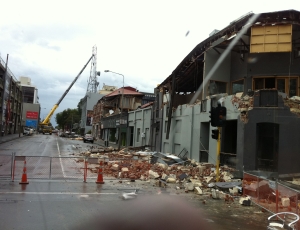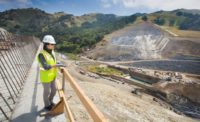As it did with last year�s devastating earthquake in Haiti, Miyamoto International, West Sacramento, sent an investigative team of structural engineers to the Central Business District in Christchurch, New Zealand to assess structure damage for a week.

Just back, the team�s findings to date, documented in journal reports and press releases, indicate that 30% to 50% of buildings constructed of unreinforced masonry (URM) have sustained severe damage or collapsed, due to the 6.3 magnitude earthquake that hit on Feb. 22, killing at least 75 people.
The team observed that while many of the newer vintage buildings in Christchurch appeared structurally sound, they had actually suffered numerous forms of damage.
By comparison, the Miyamoto team says the URM damage in downtown Christchurch is greater from a percentage standpoint than what was experienced in Port-au-Prince, Haiti, as a result of last year�s earthquake. Several older non-ductile concrete buildings (existing structures that fail in a brittle manner under the load of an earthquake) have also been severely damaged or collapsed.
�These findings provide proof that countries and cities that do not have mandatory retrofit ordinances for hazardous buildings are exposed to tremendous risk � not only in New Zealand, but everywhere else in the world,� says Dr. Amir Gilani, who is leading the Miyamoto research team in Christchurch. �We also observed that many undamaged, newer buildings experienced significant non-structural damage, which is dangerous for building inhabitants and greatly impacts functionality and business continuity.�
�People in cities situated in areas of high earthquake risk may have a false sense of security because they do not fully understand the intent of most building codes, and equate code compliance to mean earthquake-proof,� says Miyamoto International CEO Dr. Kit Miyamoto, who is directing the New Zealand team from his present location in Haiti.
Dr. Miyamoto says that even in advanced earthquake engineering countries such as the U.S., New Zealand and Japan, most building codes are minimum guidelines for �life safety� only and have often proven to be inadequate for building sustainability, and at times, survivability.
�Buildings must be better designed for disasters,� says Dr. Miyamoto. �Mandatory URM and non-ductile concrete structure retrofit ordinances must be put in place to save lives. And high-performance earthquake engineering must be practiced for sustainability of new buildings so they can support continued functionality of cities after a disaster. This must be done worldwide.�



Post a comment to this article
Report Abusive Comment